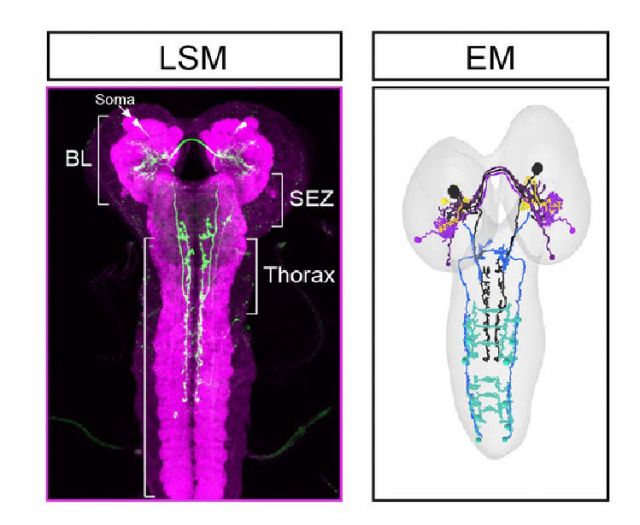
Neural Correlates of Navigational Decision-Making
To identify the neurons involved in the integration of olfactory signals, our lab carried out two forward genetic screens on large collections of Gal4 driver lines. During the first screen, we have found that that multiple sensory modalities (olfaction, thermosensation and vision) converge on neurons residing in the subesophageal zone (SEZ) and that these neurons are involved in the run-to-turn transition (see picture). More recently, we conducted a second loss-of-function screen with a second collection of Gal4 driver lines (Larval Olympiad, Janelia Research Campus). These lines show sparser expression (2-6 neurons per brain hemisphere) and the expression patterns are highly reproducible among different brains for individual driver lines. In this screen, we identified ~30 lines displaying significant chemotactic defect and sparse expression pattern. To trace the circuitry involved in the control of innate chemotaxis in the lateral horn and the mushroom bodies we made use of serial electron microscopy (SEM, collaboration with Albert Cardona). In our screen, we identified a descending neuron, which receives input from the lateral horn and strongly synapses onto the pre-motor neurons residing in the SEZ. Loss-of-function of this descending neuron caused a slight defect in the control of run-to-turn transitions; acute activation of this neuron via optogenetics led to stops in locomotion. We are now examining how changes in chemosensory input control the activity of the descending neuron.